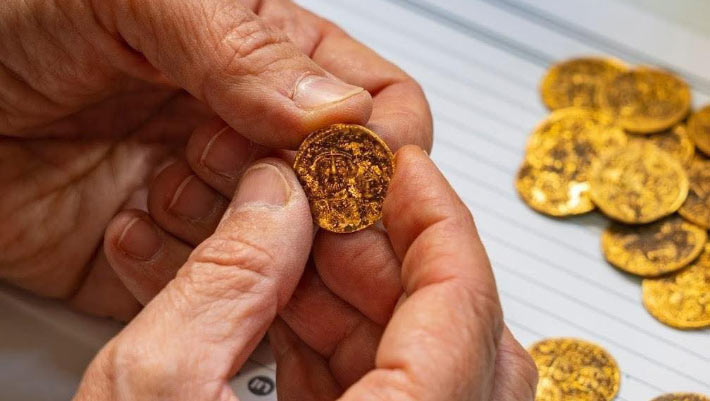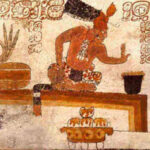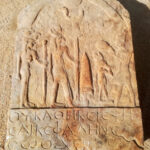A hoard of 44 gold coins dating to the 7th century CE has been unearthed by archaeologists from the Israel Antiquities Authority (IAA).
A gold solidus coin found by IAA archaeologists in Israel. Image credit: Dafna Gazit, Israel Antiquities Authority.
The coin hoard was found at the site of Paneas, later known as Banias, within the Hermon River Nature Reserve in Israel.
It was composed entirely of gold solidus coins, including some coins of the Byzantine Emperor Phocas (602-610 CE) and many coins minted by the Byzantine Emperor Heraclius (610-641 CE).
The latest coins of Heraclius date the hoard to the time of the Muslim Conquest of Byzantine Palestine in 635 CE.
“The coin hoard, weighing about 170 g, was concealed within the base of an ashlar stone wall at the time of the Muslim conquest,” said Dr. Yoav Lerer, director of the excavation from IAA.
“The discovery reflects a specific moment in time, when we can imagine the owner concealing his fortune in the threat of war, hoping to return one day to retrieve his property. In retrospect, we know that he was less fortunate.”
“The discovery of the coin hoard may also shed light on the economy of the city of Banias during the last 40 years of Byzantine rule.”

This photo shows some of Byzantine gold coins found by IAA archaeologists in Israel. Image credit: Dafna Gazit, Israel Antiquities Authority.
“Most of the coins are of the Byzantine Emperor Heraclius and what is particularly interesting is that in his early years as emperor, only his portrait was depicted on the coin, whereas after a short time, the images of his sons also appear,” added Dr. Gabriela Bijovsky, a numismatic expert with the IAA.
“One can actually follow his sons growing up — from childhood until their image appears the same size as their father, who is depicted with a long beard.”
During the excavations at Banias, the archaeologists also unearthed the remains of buildings, water channels and pipes, a pottery kiln, bronze coins, and fragments of many pottery, glass, and metal artifacts.
“The coin hoard is an extremely significant archaeological find as it dates to an important transitional period in the history of the city of Banias and the entire region of the Levant,” said IAA director Dr. Eli Escusido.




